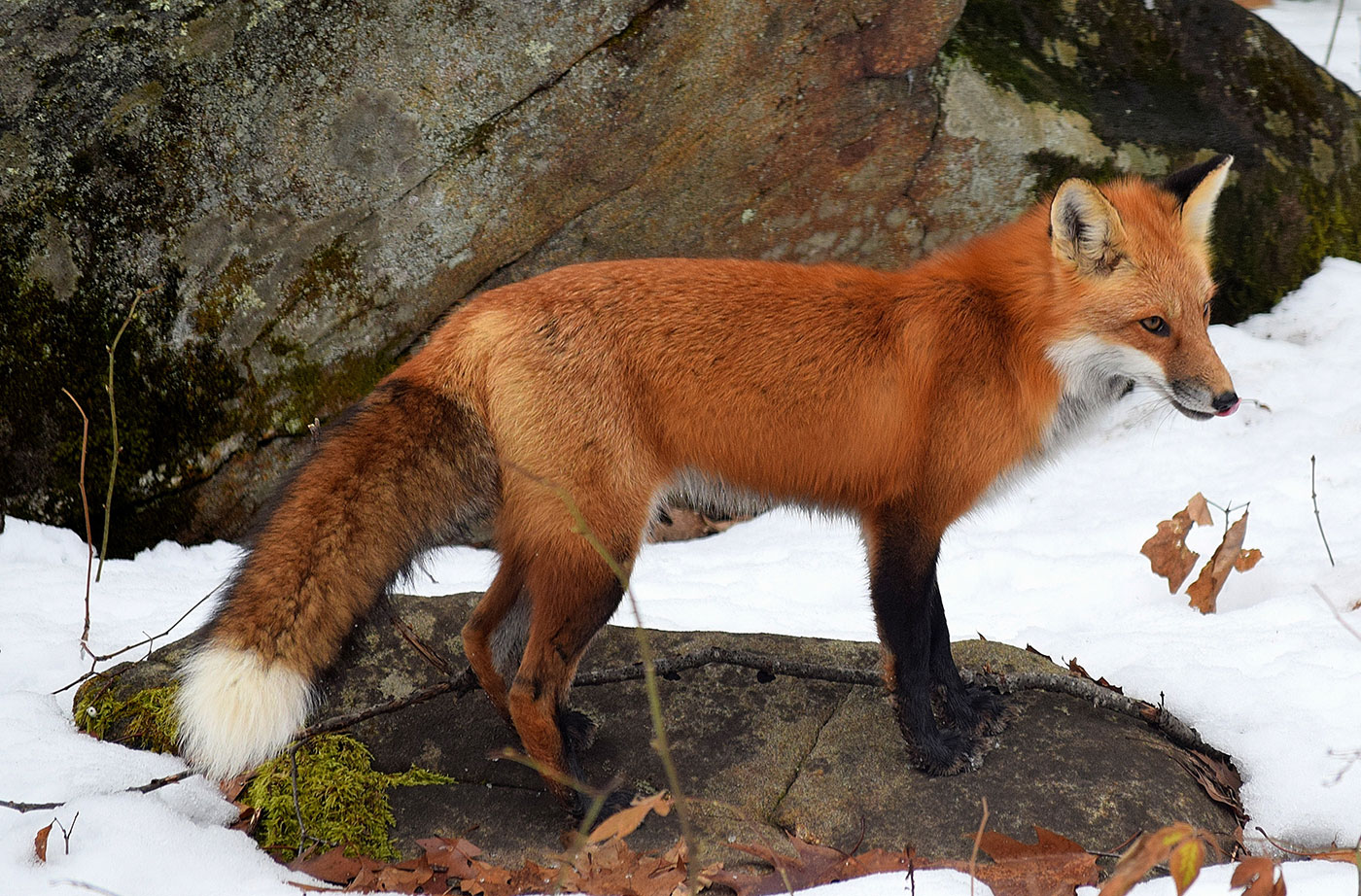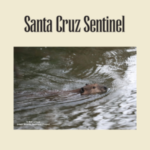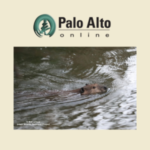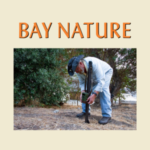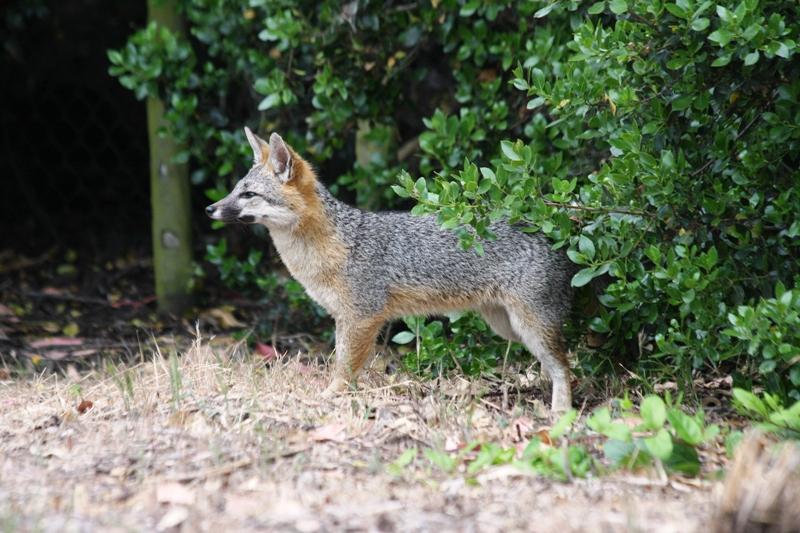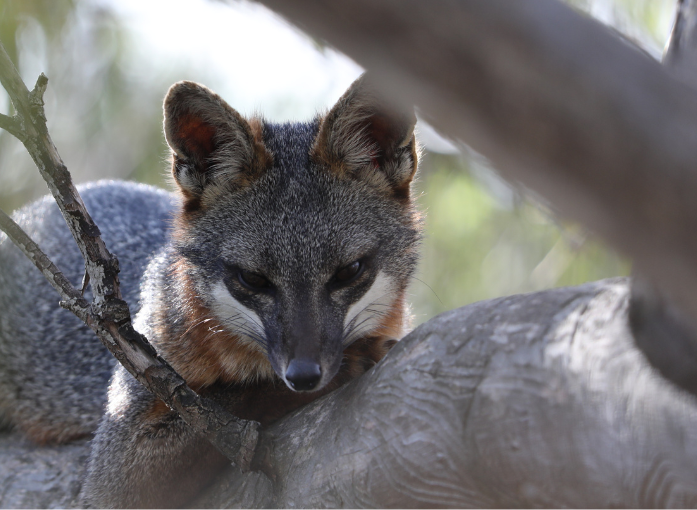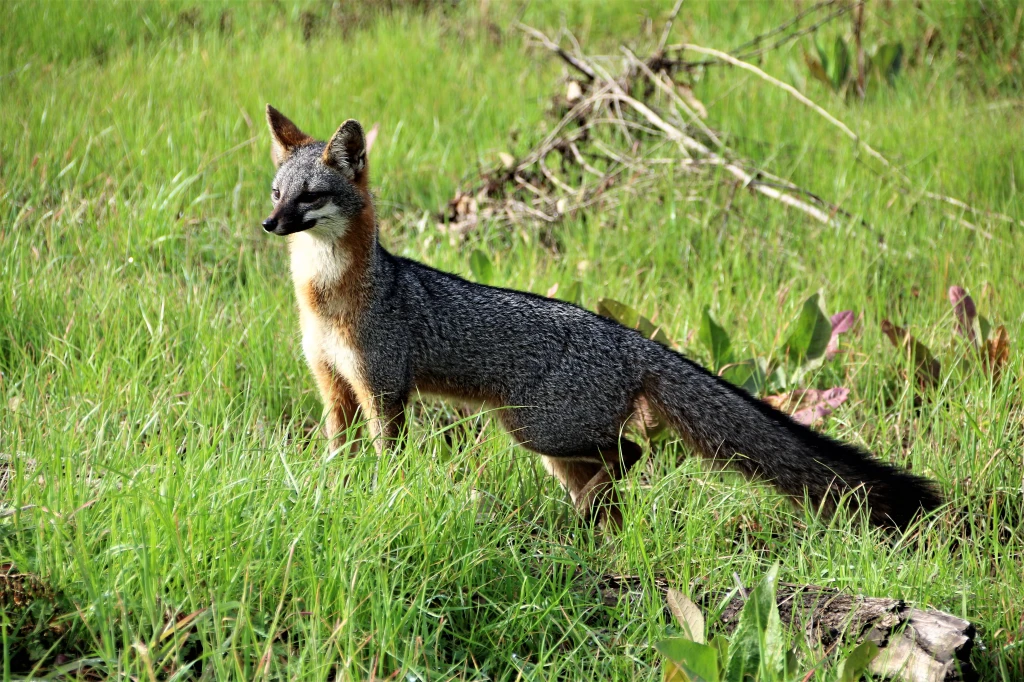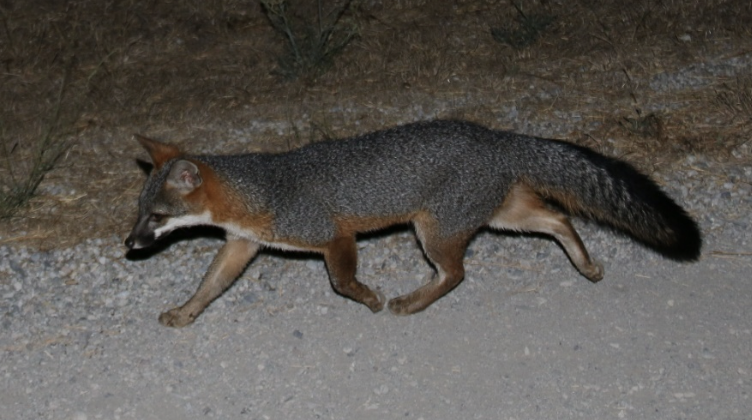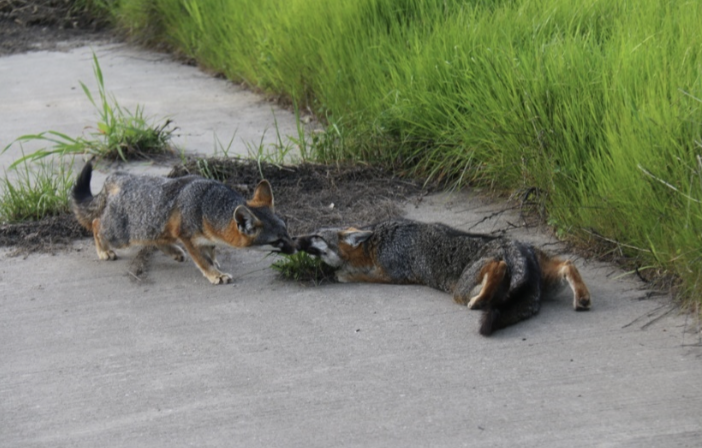by William C. Leikam
President, CEO & Co-founder, Urban Wildlife Research Project
First, to all of my readers: I am sorry that the Fox Report has been a bit erratic, but that’s due to changes in the makeup of our nonprofit. We need person-power and so if you’d like to join the team, get back in touch with me and we’ll see if your expertise fits our needs.
https://urbanwildliferesearchproject.org/contact/
The Arrival
Laimos the male gray fox died from canine distemper in the baylands on 11-21-2023. I found Laimos’s body at end of the overflow channel’s ramp. His mate Big Eyes struggled onward until on 01-18-2024 I found gray fox Big Eyes lying in the weeds alongside Pond Road early that morning. They were the last of the gray foxes to live in the Palo Alto Baylands Nature Preserve.
As the essential keystone predators of the baylands, their absence created a severe imbalance within the broader ecosphere of the preserve. Between January 18 and November 3, 2024, the jack rabbit, the cottontail rabbit, the woodrat, and many other wildlife populations exploded causing an imbalance within the ecosystem. In the process rabbit hemorrhagic disease (RHD) swept the baylands killing upwards of a hundred plus rabbits to die off as well.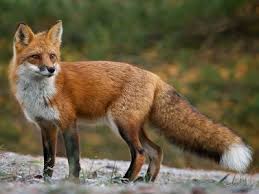 Given this imbalance in the ecosystem, it lay the groundwork for another keystone predator to find its way into the Matadero Creek area. On November 4, 2024 on trail camera #13 along what we call Pond Road, a red fox (Vulpes vulpes) trotted by, heading toward East Bayshore Road. At the time I remember having seen something like that before: a red fox that occasionally came through the region while Laimos and Big Eyes claimed the Matadero Creek area as their territory. The red fox in those days often made a single appearance and then it left the area, no doubt because it knew that gray foxes claimed the territory.
Given this imbalance in the ecosystem, it lay the groundwork for another keystone predator to find its way into the Matadero Creek area. On November 4, 2024 on trail camera #13 along what we call Pond Road, a red fox (Vulpes vulpes) trotted by, heading toward East Bayshore Road. At the time I remember having seen something like that before: a red fox that occasionally came through the region while Laimos and Big Eyes claimed the Matadero Creek area as their territory. The red fox in those days often made a single appearance and then it left the area, no doubt because it knew that gray foxes claimed the territory.
With the archive entry on 11-03–04-2024 a red fox trotted along Pond Road at 3:03 AM. The fox trotted the length of the overflow channel until 5:11 AM when he left the area, only to return the following night and continue to reappear nightly up to January second 2025. On 12-02-2024 it became obvious that this was not just a single red fox but instead it was a male, a female and a yearling that should have already dispersed.
With this sighting, and given the amount of scat in the overflow channel along with the frequency of their urine/scent marking, it is clear that this family of red foxes has established the region along Matadero Creek as their territory.
Grey Fox General Health
Gray fox Big Eyes and Laimos died. There are no gray foxes in the Palo Alto Baylands Nature Preserve.
UWRP News & Updates
Be on the lookout for Bill being booked to give another talk over at Meta (Facebook). Facebook’s event team is working on it.
Gray Fox, Baylands Goals
Within the permit that allows the Urban Wildlife Research Project to conduct its study of the behavior of the gray fox at the Palo Alto Baylands Nature Preserve, the objectives covered are:
- Monitoring of urban gray fox Denning sites in Palo Alto Baylands.
This is being accomplished during the period when the gray foxes use a den site. It is one of the prime locations for gathering most of the behavioral data of the litter and for adults alike.
- Assessment of status and population trends of Baylands urban gray foxes.
Since January 2019 a pair of resident gray foxes have claimed territory at the Palo Alto Baylands Nature Preserve.
- Identification of habitat features that promote the presence of urban gray foxes.
After considering this and talking with people who know how to restore habitats, we need to assess what kinds of plants, including the Alkaline Saltbush, would grow best along the edge of the saltwater channel and alongside the marsh. We need to grow a permanent habitat that contains the corridors and plant it as soon as possible. We will keep an eye on this as this is a critical link between the southern region of the Baylands and the northern region.
- Assessment of reproductive success and identification of factors that promote successful reproduction.
Open the pinch-point along Matadero Creek by developing thickets that link one area to another, instead of the present island-like habitat.
- Identification and assessment of possible dispersal travel routes.
Dispersal routes move between the Palo Alto Baylands Nature Preserve and the Shoreline region over in Mountain View. In a north-westerly direction the dispersal corridors run just behind the homes bordering the marshlands.
Videos and Documentaries

Be sure to watch our video documentary featuring UWRP’s participation in the global trail camera exhibit, Triggered By Motion

Bill’s book The Road to Fox Hollow can be purchased directly from Bill for a mere $20.00. Just email him through the Contact form on the Urban Wildlife Research Project’s website, leave your email address and he will get back to you. Or you can contact the publisher Di Angelo Publications .
A video documentary about Bill’s work with the foxes and produced at Stanford University by Syler Peralta-Ramos.
What happens when an opossum and a red fox meet in the night?
In contrast to two other raccoon discipline videos, this one is rather mild.
Gray Fox Playfulness “Hugging” Behaviors.
See the violence of Discipline Raccoon Style.
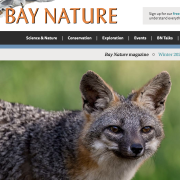
“How to be a Fox” The article about Bill and his ethological approach to his study of the gray fox is online here. Many are calling this a major article in the wildlife press.
Be Sure to check out our YouTube Channel for some incredible wildlife videos.

